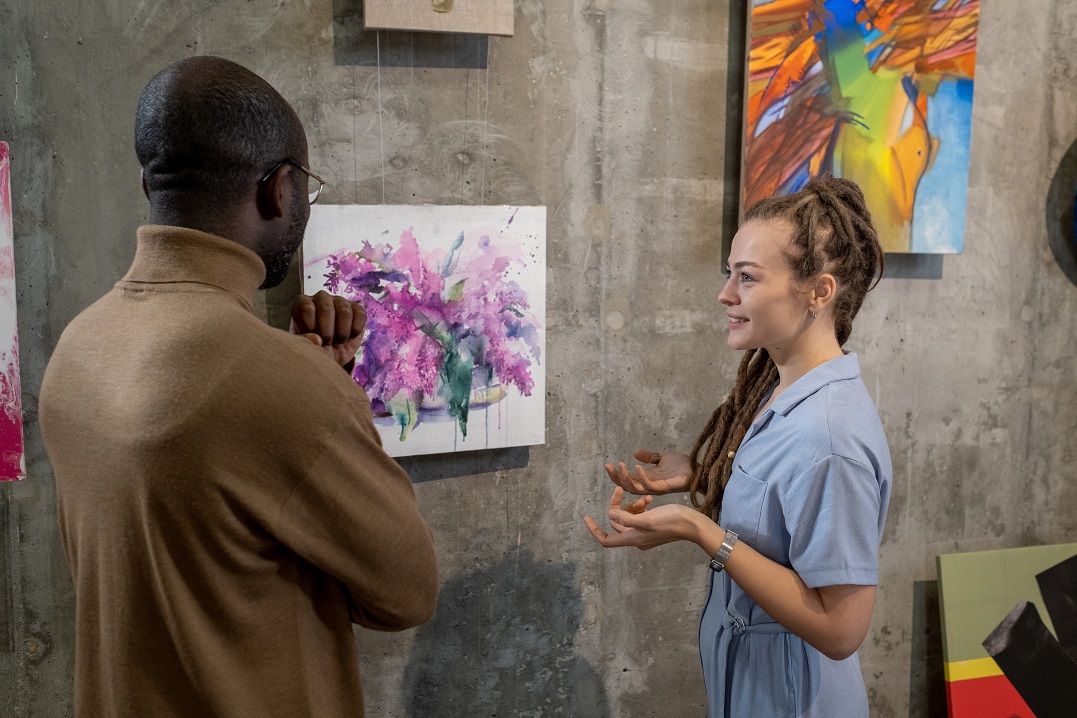Picture perfekt: 4 hacks on how to describe a photo in German
Published on November 29, 2022 / Updated on January 3, 2024
Perfecting your language skills is not an easy task, but there are many ways to practice your skills. One of them is training how to describe a photo or picture in German. This type of exercise helps you not only enrich your vocabulary but associate the words you learn directly with something you can see, touch or experience. This can help you memorize words faster, in addition to being a lot more fun than studying with plain text or conversation only.
To make you sound like an absolute German pro, we have collected some hacks that will help you bring your German skills to the next level.
As the name suggests, the syntax used in indirect speech is usually used to repeat what someone else has said. However, the same sentence structure is used when giving your opinion or describing something. In both cases, you start your statement with what you see, think or feel:
You can then add your actual opinion or view, following the sequence of noun, adjective and verb:
Describing pictures can actually be a great way to practice descriptive language because it helps you connect the words not only to abstract written language but to something you can see right in front of you. In addition to a basic set of nouns, it’s a great idea to practice adjectives and their opposites. This helps you associate descriptive words with both items as well as the contrary words.
Here are some adjectives to get you started:
Example: “Ich sehe einen großen Mann auf dem Bild, der vor einem dunklen Hintergrund steht.”
They say a picture is worth a thousand words – often because pictures can capture quite a lot. As a result, it is essential to be able to say not only what you see, but where you see it. For this, you need to learn German prepositions. An absolute pro tip: Many German verbs are used in combination with specific prepositions, so when you learn a new verb, make sure to learn the preposition with it right away! You can also find some essential prepositions here:
Example: “Der Mann auf dem Bild steht links neben einer Frau. Vor ihnen steht in Kind und rechts davon sitzt in Hund.”
A rather easy but very essential part of your vocabulary are the colors – especially when you want to improve your picture description in German. Thankfully, there are only so many colors in existence, so learning them all isn’t too much of a challenge! The main colors are:
red rot
Example: “Der Mann auf dem Bild trägt eine blaue Hose und in graues Hemd. Der Hintergrund des Bildes ist weiß.”
Describing a picture can be quite a challenge in a foreign language, but once you have mastered it, you can be fairly sure that you have acquired not only an expansive vocabulary but have also understood quite a bit about the grammar – such as the syntax or articles. A great way to playfully learn the description of a photo in German is to practice with a friend: for example, you describe something and they have to guess what you are talking about. And if you are running out of words, don’t worry: there are plenty of great dictionaries to use!
